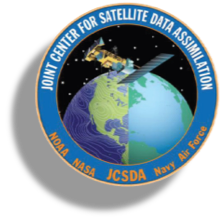JEDI-FV3
Jedi-fv3 1.1.0
JEDI-FV3 is a multi-component software package that provides everything that is needed to run DA applications for models that use the FV3 dynamical core, including NOAA’s Global Forecast System (GFS) and NASA’s Goddard Earth Observing System (GEOS). This release features a major update of the Interface for Observational Data Assimilation (IODA).
CHANGES RELATIVE TO JEDI-FV3 1.0.0
Major update of IODA (version 2.0.0)
New internal data organization leveraging HDF5 data model (ioda-engines).
New data layout in files for more efficient access to multidimensional data.
New interfaces to facilitate future integration of additional file formats.
New python/C++ interoperability.
A new online tutorial highlighting the IODA data model and how to work with IODA files in python.
Substantial enhancement of UFO capabilities
New observation operators, quality control filters, and bias correction developed to replicate operational capabilities, representing the cumulative effect of 410 updates to the UFO code.
UFO has all necessary functionality to replicate the NOAA-operational GSI system's H(x), bias correction (BC), and quality control (QC) procedures for many radiance, ozone, GNSSRO, and conventional instruments. Examples are provided in the repository.
For radiance-based instruments, UFO can fully reproduce H(x), BC, and QC for AIRS, AMSU-A, ATMS, AVHRR-3, CrIS, IASI, SEVIRI, and SSMI/S. H(x) and BC are implemented for MHS.
For ozone instruments, we reproduce H(x) for OMI, OMPS-limb, and OMPS-nadir.
For GNSSRO, H(x) and QC are implemented for AOPOD, GRAS, IGOR, and TGRS.
For conventional instruments, we implement H(x) for Aircraft, RASS, Radar VAD wind, Satwind, Scatwind, surface land, and surface marine sensors.
jedi-fv3 1.0.0
The JEDI-FV3 release contains everything needed to emulate a simplified version of the JCSDA near-real-time (NRT) applications websites with JEDI-GFS and JEDI-GEOS. This includes interfaces for processing a wide variety of observational data and a library of observation operators for conventional, satellite radiance and GNSS radio-occultation measurements that can be run from both FV3-based GFS and GEOS models.
